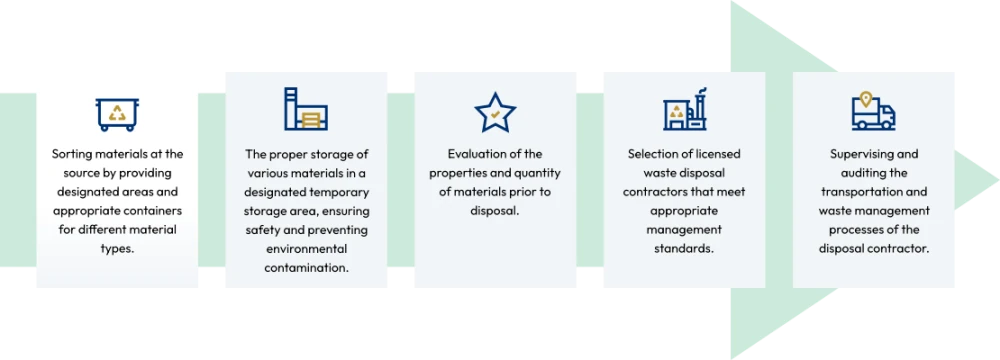Nan City Art and Cultural Center & Eastern Lanna Art and Cultural Learning Hub

CH. Karnchang is committed to constructing the Nan City Art and Cultural Center and the Eastern Lanna Art and Cultural Learning Hub with a strong focus on environmental and social responsibility. The project follows Green Building principles under TREES standards, incorporating sustainable practices such as the use of eco-friendly materials, efficient waste management, and minimizing environmental impact during construction. Additionally, the design is carefully tailored to reflect the local community's identity and the rich heritage of Lanna culture, ensuring the project's long-term sustainability for both present and future generations.
1) Use of Sustainable Building Materials
In addition to incorporating an appropriate proportion of recycled and locally sourced materials, as outlined in the "Goal Setting" section, the project also mandates the use of low-VOC paints, adhesives, and coatings to improve indoor air quality. The building is equipped with energy-efficient glazing and insulation systems designed to optimize temperature control and reduce overall energy consumption. Furthermore, the project prioritizes the use of environmentally friendly concrete, which is officially certified as a Green Label Product.
2) Construction Waste Management
- A waste segregation and recycling policy is in place, aiming for at least 95% reuse of construction waste.
- A pollution management plan has been implemented, including measures to control dust and waste to minimize environmental impact.
- Construction waste is regularly monitored, with monthly reports submitted.
3) Design for Social and Cultural Sustainability
- The project is designed to reflect Lanna's cultural heritage, incorporating traditional architectural elements and locally sourced materials.
- Existing trees within the site are preserved, and additional greenery is planted in accordance with TREES-NC guidelines to enhance the natural landscape.
- Local hiring is prioritized to support income distribution and strengthen the community economy.
4) Energy Conservation and Sustainable Resource Utilization
- Install air conditioning systems with eco-friendly refrigerants (R410A or R32) and an EER > 11.51 to enhance energy efficiency.
- Use LED lighting throughout the project to reduce energy consumption.
- Equip the facility with energy meters and a Building Automation System (BAS) to ensure long-term energy efficiency through continuous monitoring and optimization.
5) Quality Assurance and Certification Standards
- The project complies with TREES (Thailand’s Rating of Energy and Environmental Sustainability) green building standards, developed by the Thai Green Building Institute.
- Quality inspections and commissioning procedures are conducted by experts certified by TGBI (Thai Green Building Institute).
- The energy, water, and sanitation systems are tested and optimized for maximum efficiency before project handover.
CH. Karnchang’s Commitment to Recycling Construction Materials
CH. Karnchang has implemented a systematic approach to managing construction waste, ensuring that materials are carefully sorted and forwarded to legally authorized and specialized waste management providers. These materials are then either recycled or disposed of properly through a structured process, as outlined below:
Performance and Results
Scrap metal generated from operations is recycled into valuable resources by selling it to buyers, who then supply it to companies or smelting plants for reprocessing and reuse.
